
Did you know that over 25% of ovens operate inaccurately, often running up to 25 degrees off from the set temperature? This surprising statistic highlights the importance of effective cooking tips and kitchen hacks for home chefs everywhere. In our bustling kitchens, small changes can lead to significant improvements in both the quality and efficiency of our culinary creations. This article is packed with practical and clever solutions that enhance cooking experiences, from preparation methods that save time to creative ingredient substitutions that elevate flavors.
Whether you’re looking to streamline your meal prep, avoid common kitchen mishaps, or simply make cooking more enjoyable, these culinary techniques will empower you to elevate your cooking game effortlessly.
Key Takeaways
- Effective kitchen hacks can significantly improve cooking efficiency.
- Using a microwave can simplify tasks like peeling garlic and shucking corn.
- Everyday items can serve multiple purposes in the kitchen.
- Creative substitutions can help utilize leftover ingredients effectively.
- Meal planning and organization techniques enhance the cooking experience.
Introduction to Kitchen Hacks
The modern kitchen is an arena of innovation, where kitchen hacks transform routine tasks into simpler, quicker processes. As younger Americans navigate a landscape filled with convenience foods, home cooking can feel overwhelming, primarily due to parents juggling demanding work schedules and limited time to prepare meals. Cooking hacks offer practical solutions that fit seamlessly into busy lives, making culinary tasks more efficient.
The influence of social media has introduced a new wave of cooking tips, emphasizing not only functionality but also the aesthetic appeal of dishes. Recipes that capture attention through novelty are often shared widely, encouraging home cooks to experiment and innovate within their culinary practices. Materials published by reputable sources like the New York Times and Bon Appetit can add significant value, especially when learning foundational skills.
For those beginning their culinary journey, reading a recipe from start to finish serves as a practical guideline for a smoother cooking experience. Investing in informative cookbooks, such as “Salt Fat Acid Heat,” enhances one’s understanding of cooking principles and techniques. With various kitchen hacks available, resourcefulness and creativity become essential tools, turning every meal into an opportunity for exploration.
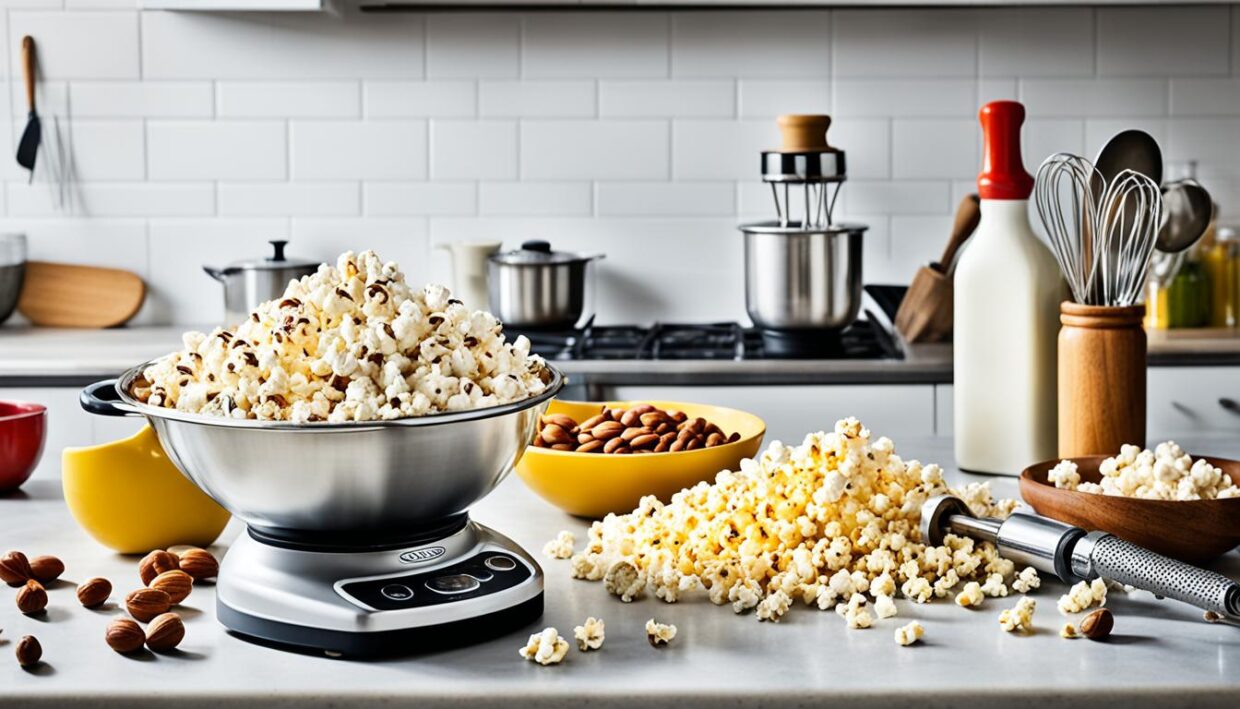
Statistic insights reveal that many individuals prefer to repurpose leftovers, reflecting a growing tendency towards sustainable meal preparation. Approximately 60 to 90 minutes may be needed to prepare and clean up after more complex meals, underscoring the need for efficient cooking strategies. With cooking hacks focusing on improving efficiency, safety, and convenience, home cooks can navigate their kitchens with confidence, encouraging a more enjoyable and effective home cooking experience.
The Power of Simple Cooking Tips
Simple cooking tips can transform your culinary experience by making effective cooking more enjoyable and efficient. Many home cooks may not realize how small adjustments in their routine can lead to significant improvements. These cooking techniques often refine the process, ensuring each meal is both tasty and well-prepared.
Statistics show that 80% of cooking tips focus on enhancing flavors. For example, adding salt to boiling pasta water or sweating aromatics can elevate a dish’s taste. Likewise, 55% of these suggestions relate to efficiency, such as using avocado to prevent moisture on hamburger buns or peeling fresh ginger with a spoon. These simple cooking tips highlight how techniques can save time and enhance meals simultaneously.
Precision in cooking remains vital, with 40% of advice emphasizing measuring ingredients by weight instead of volume. Preheating pans before searing can yield a better crust on meats, reflecting the essence of effective cooking. Safety is equally crucial; 30% of tips focus on proper ingredient handling, like utilizing a damp towel to stabilize cutting boards and carefully prepping chili peppers to retain desired heat levels.
Additionally, allowing meat to rest for 5-10 minutes after cooking improves flavor and moisture retention. Pre-warming pans for roasting significantly reduces cooking time while producing crispy edges. Seasoning while cooking maintains balance, preventing dishes from becoming overly salted or bland.
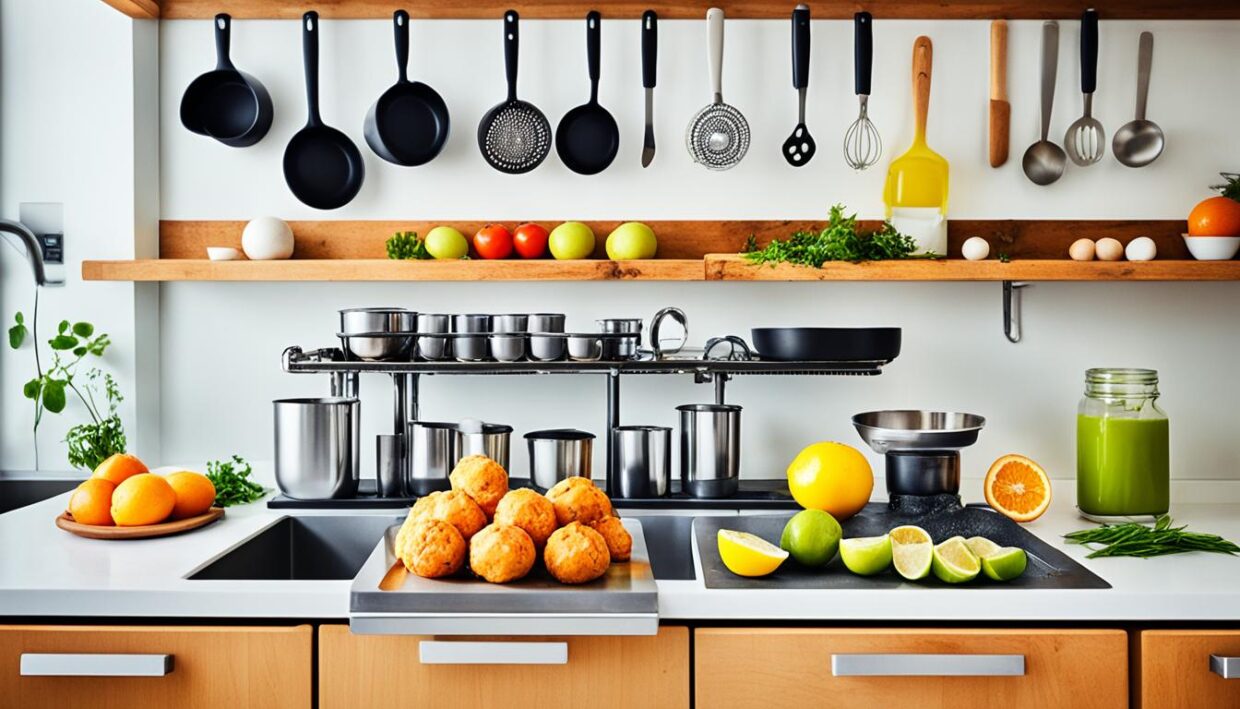
Making a roux for cheesy sauces guarantees a creamy end product without separation. Opting for al dente pasta can enhance authenticity in Italian dishes. Labeling and dating stored food preserves freshness, while using a pizza cutter for herbs expedites prep work. Serving meals buffet-style offers a relaxed dining experience, minimizing stress during meal presentations.
| Focus Area | Statistics | Examples |
|---|---|---|
| Flavor Enhancement | 80% | Salt in pasta water, sweating aromatics |
| Efficiency | 55% | Avocado on buns, peeling ginger with a spoon |
| Precision | 40% | Measuring by weight, preheating pans |
| Safety | 30% | Damp towel under cutting board, prepping chili peppers |
Using Everyday Items in the Kitchen
Utilizing everyday items in innovative ways can enhance your culinary experience and save you from unnecessary hassle. Kitchen tools are often overlooked, but many common household items can serve unconventional uses that make cooking easier. This section delves into two surprising hacks that will help you make the most of what’s around you.
Wine Bottle as a Rolling Pin
If you find yourself in need of a rolling pin when preparing dough, a wine bottle can work just as effectively. The tapered handle and smooth surface make it an excellent substitute. This unconventional use takes advantage of a common item found in many kitchens. Simply ensure the bottle is clean, and you’re ready to roll out any dough with ease.
Dental Floss for Slicing Cheese
Slicing cheese can often lead to messy results. Instead of using a knife, try dental floss for a clean and precise cut. This technique is especially useful for delicate cheeses or cakes. Using everyday items like dental floss showcases resourceful cooking tips that can elevate your preparation game while minimizing cleanup.
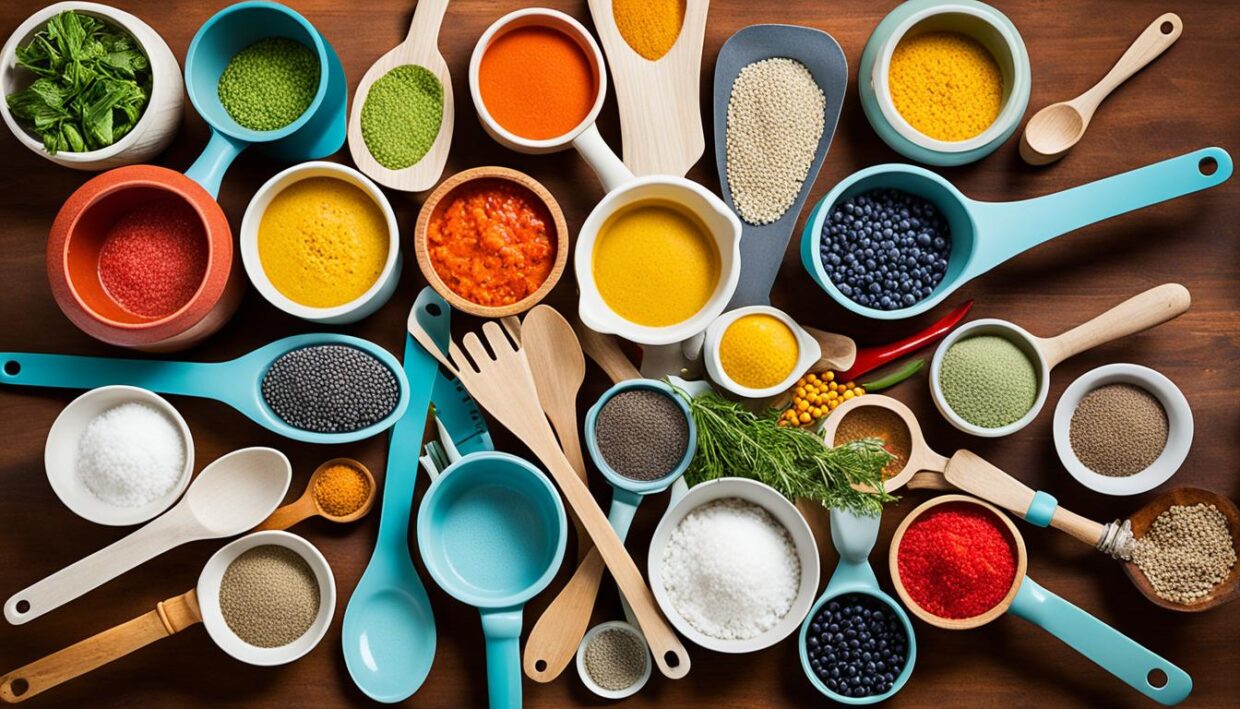
Time-Saving Preparation Techniques
In the fast-paced world we live in, implementing time-saving techniques can transform meal preparation from a chore into a breeze. Efficient cooking starts with smart strategies that maintain flavor while cutting down on time. Two popular methods that stand out for their practicality are garlic peeling and using a cooling rack for chopping.
Peeling Garlic Efficiently
Garlic peeling can often be a tedious task, consuming unnecessary time. One effective and fun method involves shaking garlic cloves in a jar. This technique not only loosens the skin quickly but also keeps your hands clean. This time-saving technique is popular among both home chefs and professional cooks, enabling them to move swiftly to the next step in cooking.
Chopping with a Cooling Rack
For efficient cooking, consider utilizing a cooling rack for chopping vegetables or mashing ingredients. This innovative approach allows food to stay stable while you work, making tasks like preparing guacamole or mashing potatoes much faster. By adopting these methods, you streamline your preparation and enjoy more time savoring your delicious creations.
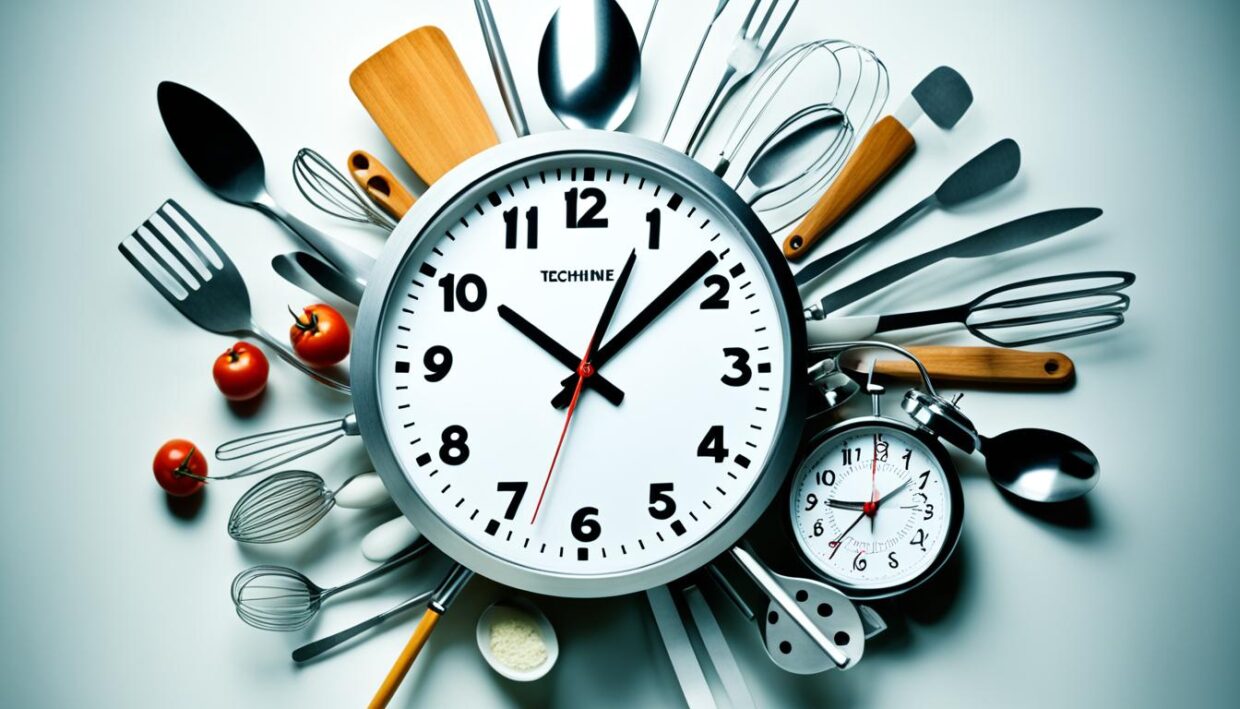
Creative Ingredient Substitutions
Ingredient substitutions can transform your cooking experience, allowing for delicious adaptations tailored to your preferences or dietary needs. With a bit of creativity, home chefs can replace common ingredients without compromising flavor. Experimenting with these alternatives can also help reduce waste by incorporating leftover ingredients into your meals.
Smart Substitutions for Common Ingredients
When you’re missing an ingredient or need to accommodate dietary restrictions, consider these smart substitutions:
- Eggs: Use ¼ cup of applesauce, mashed bananas, or silken tofu for each egg in baking.
- Flours: Replace traditional wheat flour with gluten-free options like rice, almond, or coconut flour in a 1:1 ratio.
- Baking Powder: Create a homemade gluten-free version using 1 part baking soda, 2 parts cream of tartar, and 1 part arrowroot powder or potato starch.
- Milk: Non-dairy milk alternatives like almond, soy, or coconut milk can stand in for cow’s milk.
- Cheese: For cheese lovers, vegan alternatives from nuts, soy, or tapioca starch make excellent substitutes.
- Nut Butter: Sunflower seed butter or soy nut butter can replace peanut butter for a nut-free option.
- Dairy: Use coconut oil, olive oil, or vegan margarine in place of butter for dairy-free recipes.
- Sugars: Honey can be swapped with maple syrup, agave nectar, or coconut sugar for a vegan-friendly sweetener.
How to Use Leftover Ingredients
Making the most of leftover ingredients can elevate your dishes with unique flavors while minimizing waste. Here are some creative ideas:
- Barbecue Sauce: Blend 75% ketchup, 15% mustard, and 10% brown sugar for a quick homemade sauce.
- Buttermilk: Combine 1 cup of regular milk with 1 tablespoon of lemon juice or vinegar for a quick substitute.
- Rice: Use leftover rice in stir-fries or as a base for salads, adjusting liquid and cooking times if necessary.
- Sweeteners: For sugar-free baking, mix 100% granulated sugar with 10% cornstarch to create powdered sugar.
- Wine: Instead of red or white wine, consider using grape or cranberry juice, or apple or white grape juice in equal measurements for cooking.
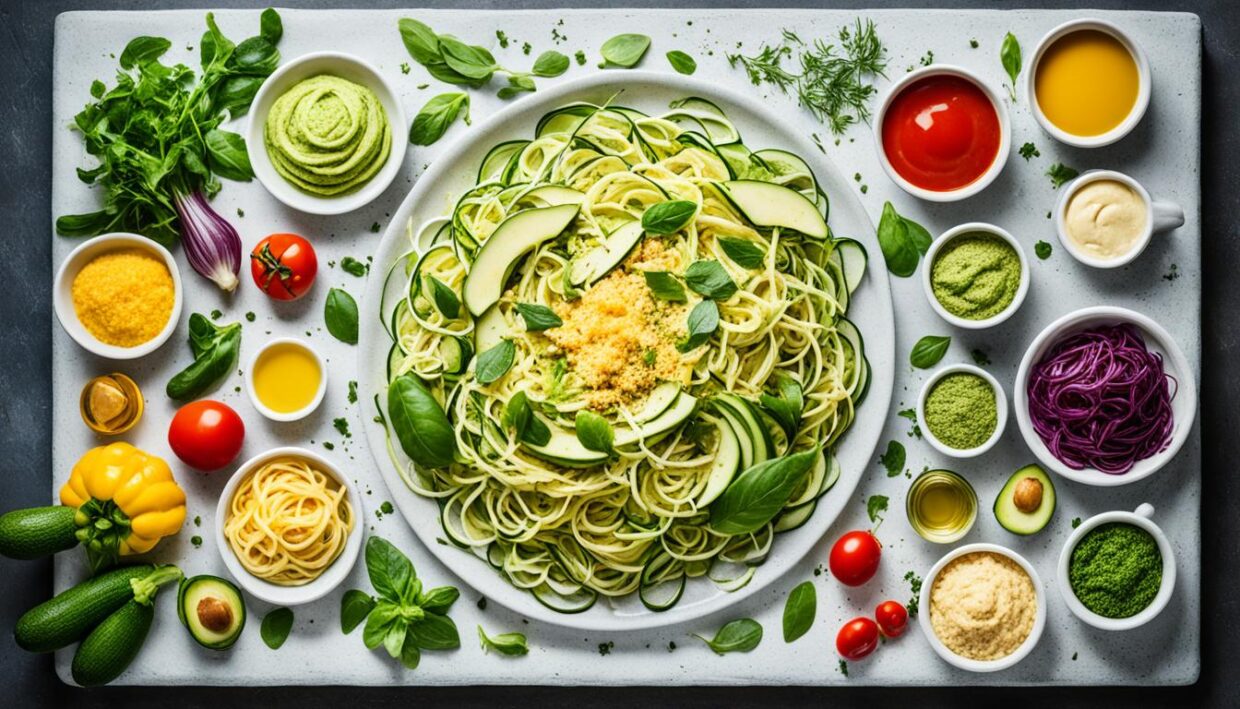
These cooking tips open up a world of possibilities in your kitchen, making cooking both enjoyable and sustainable. By embracing ingredient substitutions and finding innovative ways to utilize leftover ingredients, you can create meals that are both satisfying and resourceful.
Cooking Methods that Save Time
Efficient cooking methods can help home chefs streamline their time in the kitchen. With a variety of techniques, busy individuals can enjoy home-cooked meals without the lengthy preparation. The following methods emphasize time-saving cooking and smart meal prep strategies.
Microwave Hacks for Quick Cooking
Microwave cooking extends beyond reheating leftovers. It offers several time-saving advantages:
- Peeling garlic: Place cloves in a lidded jar and shake for easy peeling.
- Slicing cherry tomatoes: Position two lids or plates to contain tomatoes for uniform cutting.
- Poaching eggs: Utilize muffin tins for perfectly poached eggs in under 13 minutes.
Freezing for Future Meal Prep
Freezing ingredients provides a practical solution for meal prep. Consider these techniques:
- Batch cooking: Cook larger portions to make meals easier during the week.
- Storage essentials: Keep canned bone broth and frozen vegetables for quick soups and stews.
- Pre-cooked proteins: Products like John Soules Foods offer convenient options for quick meal assembly.
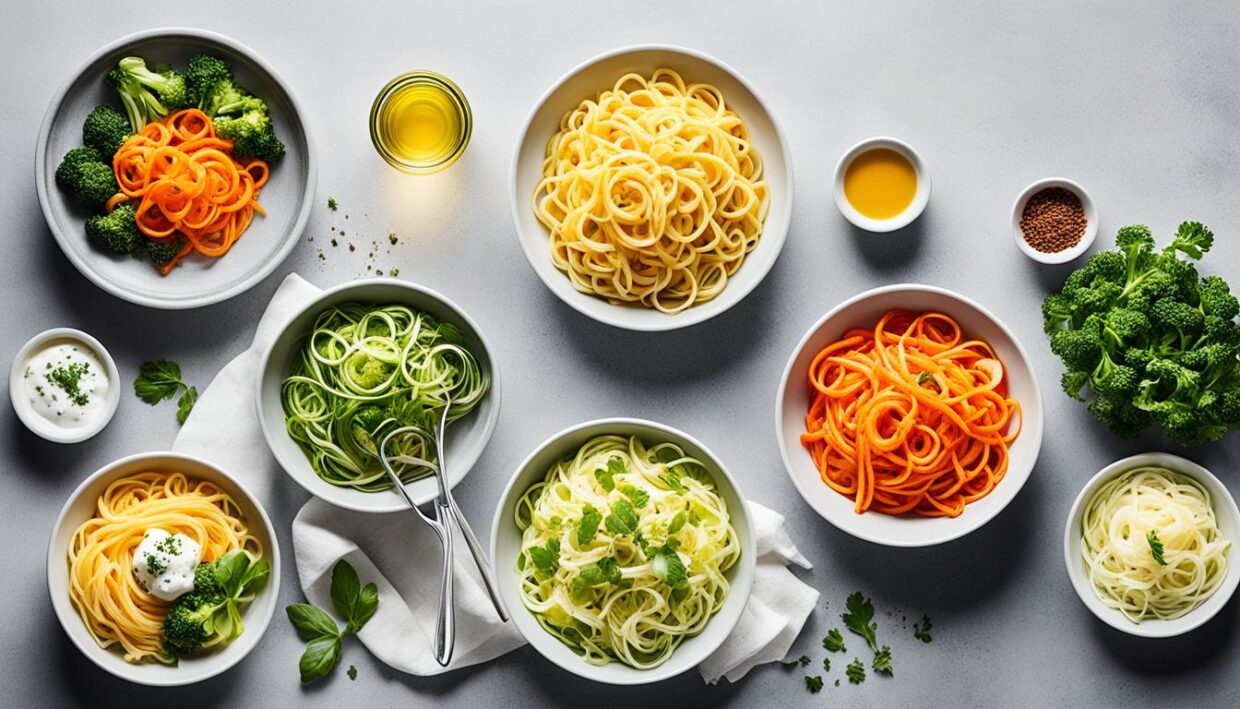
Incorporating these time-saving cooking methods into weekly routines allows chefs to enjoy the rewards of home cooking without the stress of lengthy preparation times. Learning and adapting to each technique promotes greater efficiency in the kitchen while ensuring meals remain delightful and satisfying.
Kitchen Tools that Enhance Efficiency
Optimizing the kitchen experience requires smart choices when selecting tools. Innovative kitchen tools are essential in enhancing efficiency, improving cooking organization, and saving valuable time. A little creativity can transform everyday items into multi-functional assets that simplify food preparation.
Using an Ironing Board as a Cooling Rack
Looking for extra space? An ironing board can be repurposed as a cooling rack. Simply remove its cover, and you will discover ample surface area for cooling baked goods. This solution is not only practical but also keeps kitchen organization intact, allowing you to focus on your culinary creations.
The Magic of Lazy Susans for Organization
Lazy Susans offer an incredible way to streamline cooking organization. Placing spices and frequently used ingredients on a rotating tray makes them easily accessible while keeping countertops clear. These handy kitchen tools drastically improve efficiency, as reaching for items becomes a simple spin instead of cluttered searching.
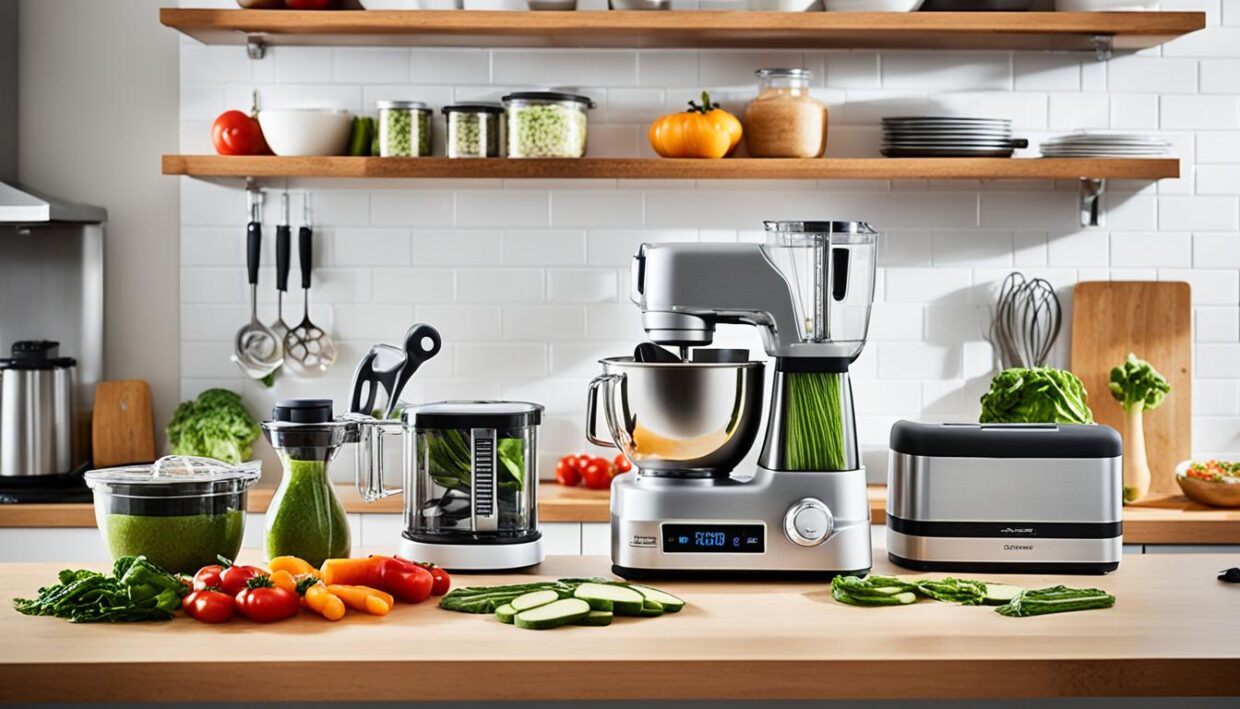
Flavor Combinations to Boost Your Dishes
Exploring flavor combinations can transform ordinary meals into exceptional culinary experiences. By enhancing dishes with creative blends, home chefs can elevate their cooking flavors and create memorable meals. A simple example is simmering tomato sauce with carrots, which introduces a natural sweetness that perfectly balances acidity and adds depth to the sauce.
Simmering Tomato Sauce with Carrots
Adding carrots to tomato sauce not only enhances the taste but also increases the nutritional value of the dish. The sweetness of the carrots complements the tanginess of the tomatoes, creating a rich and flavorful base. This technique is just one way to embrace the five fundamental tastes: sweet, salty, sour, bitter, and umami. Such combinations allow for a more balanced flavor profile, appealing to a broader range of palates.
Creative Flavor Enhancements
When looking for exciting flavor combinations, consider utilizing global cuisine profiles. Mediterranean herbs, Asian spices, and Middle Eastern ingredients can bring a unique twist to familiar dishes. Ingredients like miso paste and Parmesan cheese are rich in umami and can act as flavor boosters in many recipes. Pairing familiar favorites such as chocolate and fresh strawberries or vanilla and raspberry can surprise and delight consumers. By incorporating seasonal and local produce, chefs can ensure freshness while experimenting with new flavor pairings.
Texture also plays a crucial role in creating a satisfying culinary experience. Balancing tender proteins with crispy salads or pairing creamy sauces with crunchy vegetables can enhance the overall enjoyment of a dish. Embracing these strategies will not only enrich your cooking flavors but also inspire confidence to experiment in the kitchen.

Meal Planning Made Easy
Meal planning offers an ideal solution for busy home chefs seeking to streamline their cooking process. By dedicating a few minutes each week to organize meals, individuals can enjoy significant benefits, including time savings on grocery shopping and reduced food waste.

- Assess your pantry and freezer: Before drafting a meal plan, check what you already have on hand. This step helps avoid purchasing duplicate items and saves money.
- Plan for the workweek: Focus on meal prep from Monday to Friday, especially for those juggling work or school commitments. This approach ensures healthy meals are available without the last-minute rush.
- Batch cooking: Prepare dishes like stews, chilis, and pasta that can be made in larger quantities. Efficient dinner preparation becomes simpler when these meals are ready to be enjoyed throughout the week.
- Maintain flexibility: Allow room for spontaneity in your meal plan to accommodate social schedules. Opt for recipes that are enjoyable, yet straightforward, to encourage continual engagement with meal planning.
- Involve family members: Involving children in both meal planning and cooking can enhance their understanding of nutrition and foster a love for preparing food.
By embracing meal planning, reduced decision fatigue becomes a reality. Daily meal choices can be overwhelming, but having a structured plan lessens the stress of wondering what to eat. As an extra advantage, meal planning leads to a healthier diet, encouraging the selection of nutritious options over processed alternatives.
Preventing Common Kitchen Mishaps
The kitchen is a lively space where culinary creativity thrives, but it can also lead to various kitchen mishaps if proper precautions are not taken. Understanding common cooking problems and adhering to effective cooking tips can significantly reduce risks and create a safer cooking environment.
Stopping Ice Cream from Melting
Keeping ice cream intact during transportation or serving can be tricky. A clever way to prevent it from melting is to wrap the container in bubble wrap before putting it in a cooler or insulated bag. This method provides insulation to maintain the cold temperature, leading to fewer melty situations.
Preventing Boiling Pasta Water from Overflowing
Overflowing pots are a frequent kitchen mishap that can cause a mess and contribute to other common cooking problems. To mitigate this, place a wooden spoon across the top of the pot while cooking. This technique creates a barrier that disrupts the bubbles, allowing the water to boil without spilling over. Such simple cooking tips can enhance your cooking experience and reduce clean-up time.
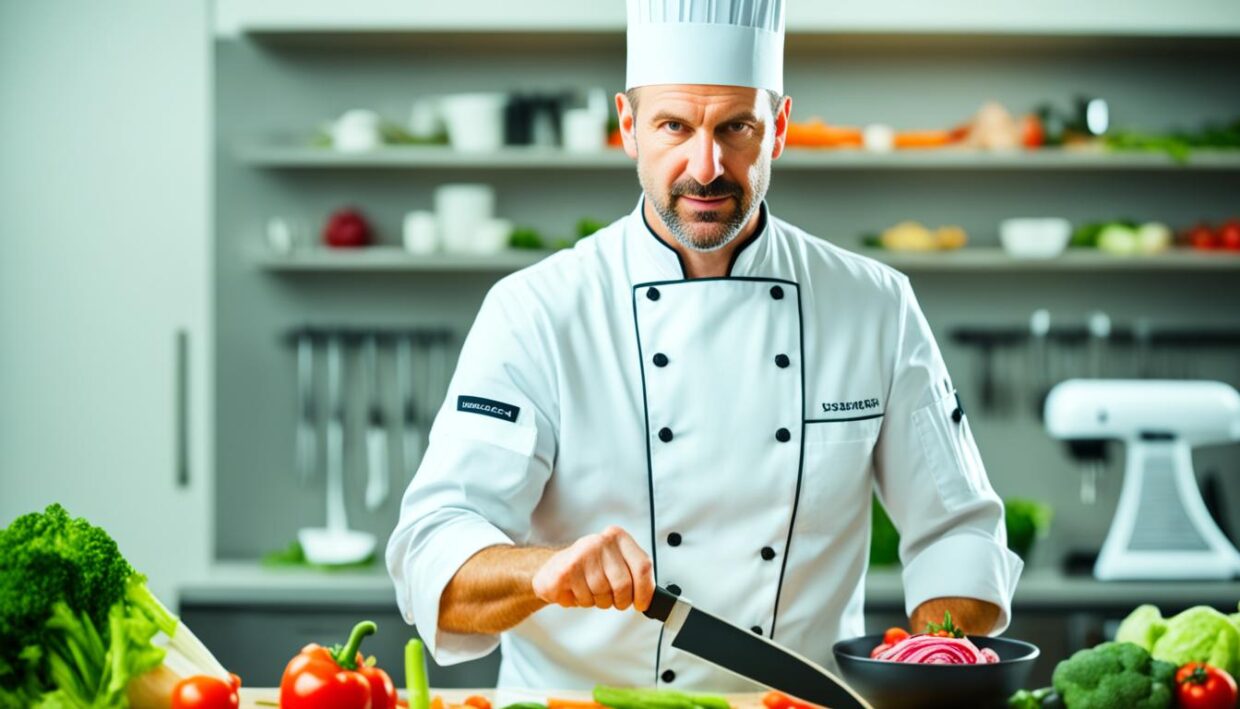
The Benefits of Effective Food Storage
Understanding the significance of effective food storage can drastically improve the quality of your meals and help you avoid food waste. Proper techniques for preserving ingredients maintain freshness, enhance flavors, and contribute to effective cooking. Implementing simple food storage methods leads to more enjoyable and sustainable kitchen experiences.
Keeping Brown Sugar Soft
Brown sugar can easily harden over time, making it difficult to use in recipes. A simple solution involves placing a few marshmallows in the container with the sugar. This technique absorbs moisture and keeps the brown sugar soft and ready for use. Proper food storage not only helps in preserving ingredients but also makes cooking more efficient and enjoyable.
Prolonging the Freshness of Herbs
Fresh herbs can elevate the flavor of any dish but often lose their vibrancy quickly. To ensure you maximize their lifespan, store herbs upright in a jar with water like a bouquet. Covering them loosely with a plastic bag while keeping them in the refrigerator helps prolong freshness. Effective food storage allows you to keep these precious ingredients at their best, ideal for enhancing your cooking endeavors.
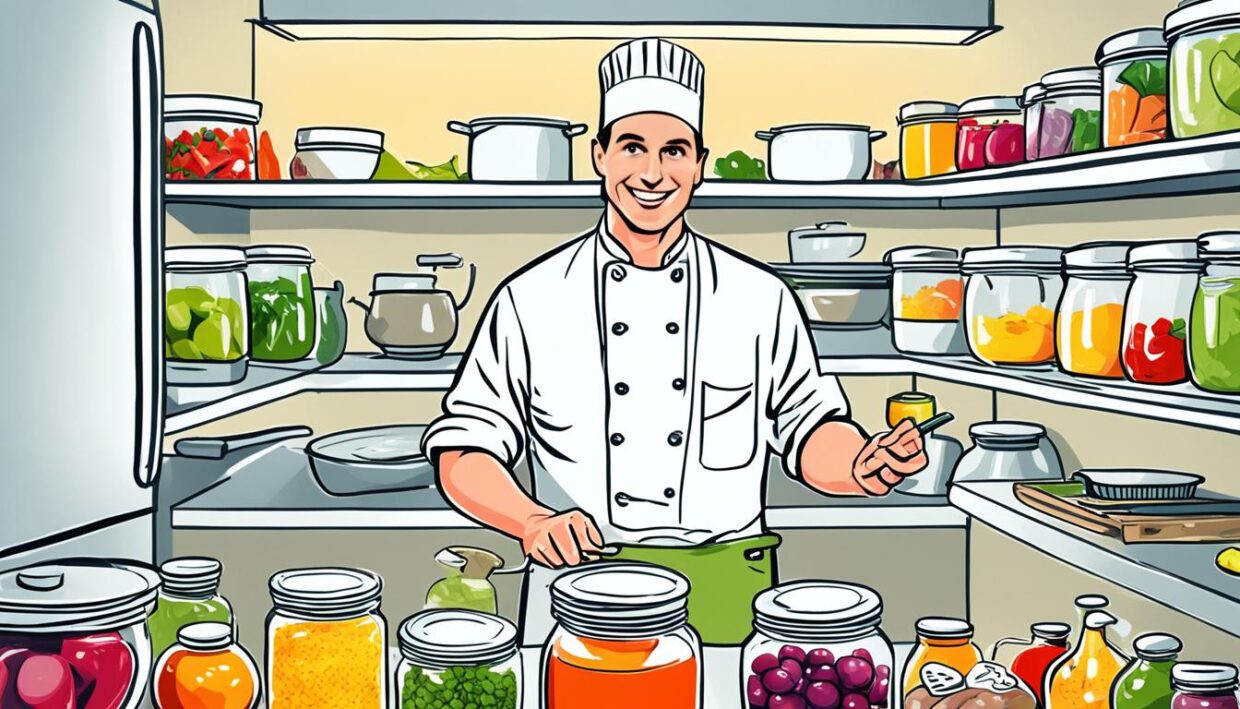
How to Maintain Essential Kitchen Tools
Proper kitchen tool maintenance plays a significant role in ensuring longevity and efficiency in meal preparation. Focusing on preserving kitchen tools can save time, money, and effort in the long run. Regular maintenance reduces expensive repair costs, especially significant in the kitchen appliance industry. Simple tasks such as cleaning and organizing tools can greatly enhance cooking performance.
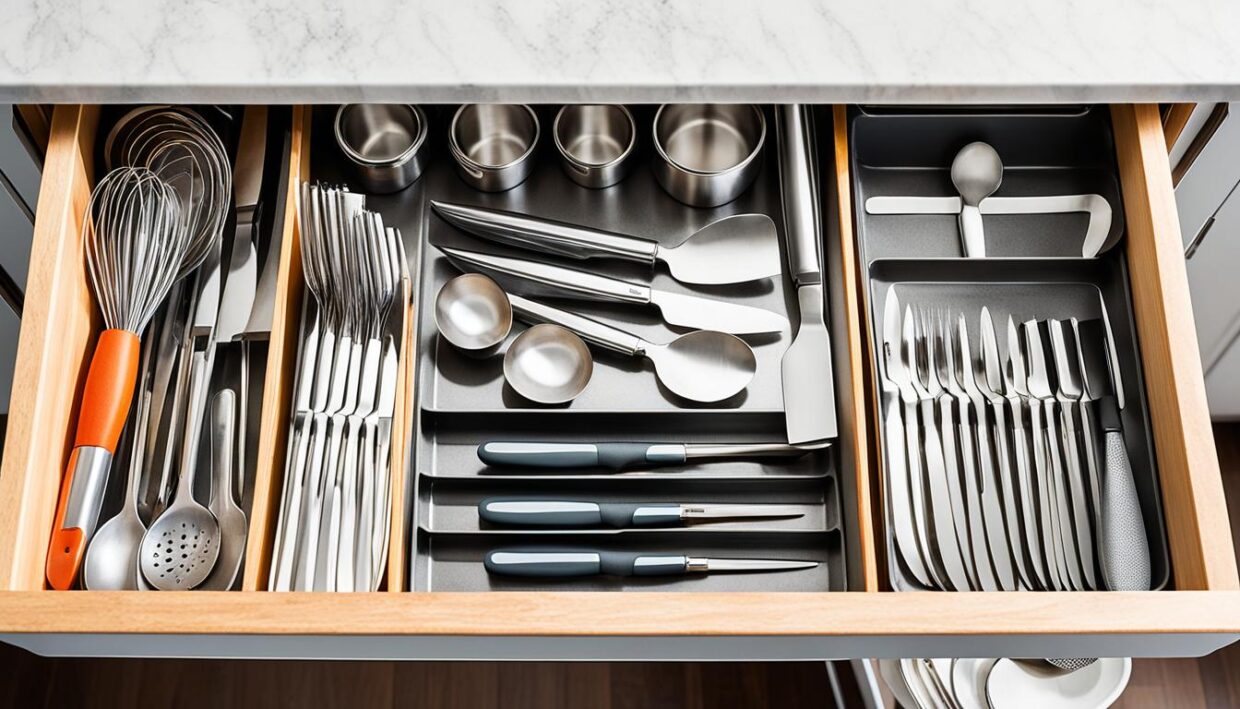
One essential practice involves developing a routine for sharpening knives, whether weekly or bi-weekly. This helps prolong the lifespan of your kitchen knives, vital tools for any chef. Investing in quality kitchen equipment from authorized dealers ensures warranties and professional repairs are accessible, which can significantly impact customer satisfaction.
- Consider having a 4-quart saucepan for everyday cooking needs.
- A stock pot between 8 to 12 quarts works wonders for larger batches of soups and stews.
- A 4-piece set of measuring cups will support precise ingredient quantities.
- Investing in a variety pack of wooden spoons (around 6 pieces) allows for versatility in stirring and mixing tasks.
- Using multiple plastic cutting boards can prevent cross-contamination.
- Having prep bowls of various sizes helps keep your ingredients organized.
Specific tools, such as a colander for draining pasta and vegetables, along with a salad spinner for drying greens, enhance efficiency in the kitchen. An immersion blender is also invaluable for making pureed soups and smoothies directly in their pots.
Additionally, the practice of mise en place is an effective way to prepare and organize ingredients and tools before cooking. Keeping a damp cloth or sponge nearby facilitates quick cleanups. Washing dishes during simmering breaks streamlines maintenance tasks, ensuring a pleasant cooking environment.
| Tool | Function | Maintenance Tip |
|---|---|---|
| Knives | Cutting and slicing | Sharpen regularly |
| Measuring Cups | Measuring ingredients | Clean after each use |
| Cutting Boards | Food prep | Sanitize after use |
| Colander | Draining | Wash immediately after use |
| Immersion Blender | Blending soups | Clean thoroughly after use |
Embracing these cooking tips not only preserves your kitchen tools but also contributes to creating a more enjoyable cooking experience. A clean and well-maintained kitchen will enhance both your culinary creations and overall satisfaction in the kitchen.
Cooking Tips for Healthy Meals
Creating healthy meals is both an art and a science, where fresh ingredients play a pivotal role. When home cooks focus on utilizing seasonal produce, it naturally enhances the nutritional value of meals. The combination of fresh ingredients with balanced cooking techniques can transform everyday dishes into delightful and nourishing options.
Using Fresh Ingredients Wisely
Incorporating fresh ingredients into your daily cooking can significantly improve the healthiness of your meals. Choosing whole fruits and vegetables instead of juices increases fiber intake, aiding digestion. Selecting healthy oils such as canola and olive for sautéing keeps heart health in check. Consider the following tips:
- Include two 4-ounce portions of fatty fish each week, like salmon or mackerel, for heart health.
- Opt for lower-fat dairy options, such as reduced-fat feta, to limit saturated fat.
- Incorporate five to nine servings of fruits and vegetables each day for overall well-being.
Balancing Flavors with Healthy Options
The balance in meals is crucial for both taste and nutrition. Aiming to use three of the five food groups helps create satisfying dishes. Home cooks can experiment with various herbs and spices to elevate flavors while keeping meals healthy. Additionally, the following tips can enhance flavor without compromising nutrition:
- Season dishes with a cup of wine for richer taste, especially in stews or sauces.
- Prepare mason jar meals for convenience and portion control, perfect for on-the-go eating.
- Utilize batch cooking and plan meals ahead to streamline weekdays and reduce waste.
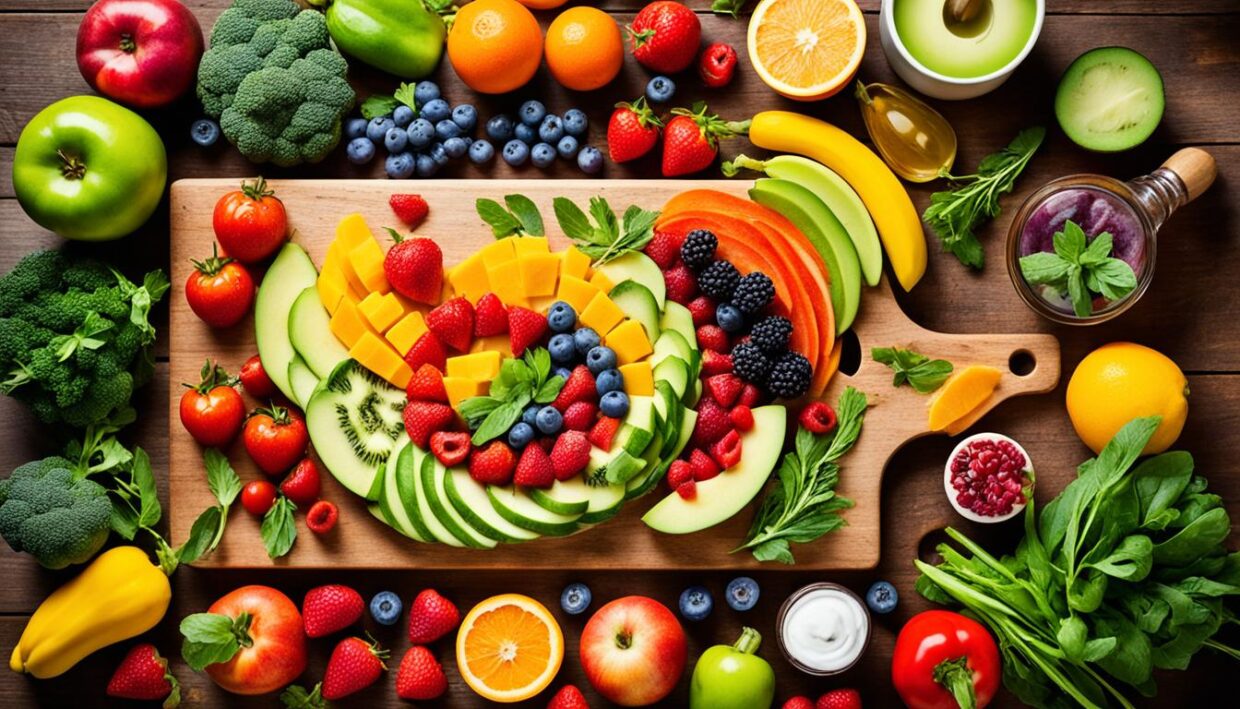
| Cooking Strategy | Benefit |
|---|---|
| Using fresh herbs | Enhances flavor naturally |
| Batch cooking | Saves time and reduces waste |
| Healthy fats | Supports heart health |
| Mason jar meals | Facilitates meal portability |
| Microwave cooking | Increases convenience and efficiency |
Innovative Kitchen Hacks from Social Media
Social media has transformed the way people approach cooking, opening up new avenues for innovative cooking tips. Platforms like TikTok have become treasure troves of viral hacks that inspire home chefs to experiment with their culinary skills. With 97% of Internet users trying recipes they’ve seen online, it’s evident that these tips create a buzz that resonates strongly with food enthusiasts.

Viral Cooking Hacks Explored
Culinary experts have shared insights on the practicality of various viral hacks circulating on social media. According to research, 77% of users credit their improved culinary abilities to guidance found on these platforms. Suggestions that focus on efficiency, such as using olive oil to prevent pasta from sticking or microwaving garlic for easy peeling, have gained particular popularity. As home cooks seek to save time and ingredients, these innovative cooking tips hold substantial appeal.
- Creative uses for food scraps, like broccoli stems, are trending.
- Unique methods for peeling eggs, such as using a spoon, have garnered interest.
- Viral video content demonstrates alternative techniques for reducing food waste.
- Engaging hacks, like cutting bell peppers in specific ways, illustrate the imaginative spirit of cooking.
The interest in online blogs continues to grow, with a preference against traditional cookbooks seen in 72% of users. This trend reflects the desire for easily digestible content that speaks to current culinary practices. Tips that enhance flavors, manage saltiness, and modify textures in dishes frequently attract viewer engagement, highlighting the ongoing evolution of cooking influenced by social media.
Conclusion
In conclusion, this article has illuminated a wealth of cooking tips and culinary hacks designed to empower home chefs in their kitchens. By implementing these practical suggestions, cooks can elevate their culinary experiences, transforming everyday meals into delightful creations that are both delicious and accessible. Whether adopting time-saving preparation techniques or making innovative ingredient substitutions, the insights shared aim to enrich and inspire every cooking endeavor.
Moreover, embracing sustainable cooking practices significantly contributes to lowering your carbon footprint. Techniques such as using induction cooktops, conserving water, and composting food scraps not only enhance your cooking efficiency but also promote environmental responsibility. As home chefs become more aware of impactful choices, they can enjoy the benefits of healthier meals while simultaneously minimizing their ecological impact.
Ultimately, the journey of culinary exploration is a blend of creativity, efficiency, and sustainability. By harnessing the cooking tips and kitchen hacks presented here, you can enjoy delicious home-cooked meals while developing habits that resonate with both taste and environmental consciousness. Happy cooking!


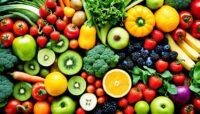


















Be the first to leave a comment